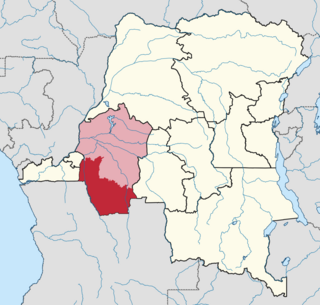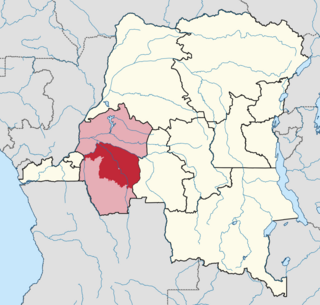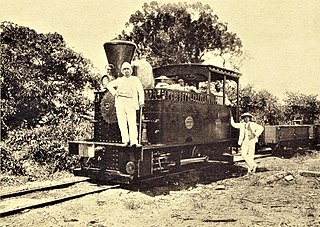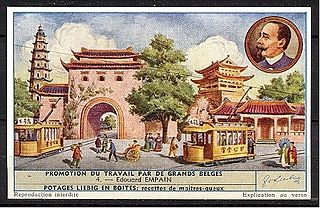| |||||
| Decades: | |||||
|---|---|---|---|---|---|
The following lists events that happened during 1932 in the Belgian Congo .
| |||||
| Decades: | |||||
|---|---|---|---|---|---|
The following lists events that happened during 1932 in the Belgian Congo .
| Date | Event |
|---|---|
| The Empain group and the Société Minière de la Tele creates Cobelmin, a mining company that prospected and exploited mines for several companies that had obtained concessions in the CFL mining sector. [1] | |
| Exploitation of the Kamituga deposits in the south of Kivu Province began. [2] | |
| January | Gaston Heenen (1880–1963) is appointed governor and deputy governor-general of Katanga Province. [3] |
| 17 August | Paul Ermens becomes governor and deputy governor-general of Congo-Kasaï. [3] |
| 11 November | Société des Chemins de Fer Vicinaux du Congo opens the line from Buta to Titulé. |
| December | Société des Chemins de Fer Vicinaux du Congo opens the line from Andoma to Zobia. |
| 14 December | Étienne Tshisekedi, future prime minister of Zaire, is born in Luluabourg. |

Kinshasa is the capital and largest city of the Democratic Republic of the Congo. Once a site of fishing and trading villages along the Congo River, Kinshasa is now one of the world's fastest-growing megacities. With an estimated population of 16 million residents, it's the most densely populated city in the DRC and the most populous city in Africa. It is Africa's third-largest metropolitan area and the leading economic, political, and cultural center of the DRC. It houses several industries, including low-tech manufacturing, such as such as plastic and foamwares, toilet paper, and bottled water, banking, and entertainment. The city also hosts some of DRC's significant institutional buildings, such as the Palais du Peuple, Palais de la Nation, Court of Cassation, Constitutional Court, Cité de l'Union Africaine, Palais de Marbre, Stade des Martyrs, Immeuble du Gouvernement, and multiple federal departments and agencies.

Article 2 of the Constitution of the Democratic Republic of the Congo divides the country into the capital city of Kinshasa and 25 named provinces. It also gives the capital the status of a province. Therefore, in many contexts Kinshasa is regarded as the 26th province.

Équateur District was a former district of the Congo Free State, Belgian Congo and Democratic Republic of the Congo. In 1914 it became part of former Équateur Province. The district went through various changes of extent and name over the years. The original district roughly corresponds to the current provinces of Équateur and Tshuapa.

Kwango District was a district of the Congo Free State, Belgian Congo and the Democratic Republic of the Congo. It went through various changes in extent. It roughly corresponded to the present provinces of Kwilu and Kwango.

Kwilu District was a district of the Belgian Congo and the Democratic Republic of the Congo. It roughly corresponded to the present province of Kwilu.

The Compagnie du chemin de fer du Congo supérieur aux Grands Lacs africains was a Belgian railway company established in 1902 in the Congo Free State, later the Belgian Congo, now the Democratic Republic of the Congo. It provided service in the eastern part of the colony south of Stanleyville (Kisangani) to serve the settlers and mining operations in Katanga. It operated a combination of river steamer service along the Lualaba River and railway links where the river was not navigable, including a link to Lake Tanganyika. In 1960 it became the Société congolaise des chemins de fer des Grands Lacs.
The Compagnie Minière des Grands-Lacs (MGL) was a Belgian mining company active in the Belgian Congo and then in the Democratic Republic of the Congo. It was established in 1923 and in 1976 merged with other companies into the Société Minière et Industrielle du Kivu (SOMINKI). The company was active in the eastern regions of Maniema and Kivu, with its main center at Kamituga in today's South Kivu. It extracted gold, tin and other minerals.
'La Belgika was a trading company that was active in the Congo Free State and the Belgian Congo. It produced, processed and exported commodities such as rubber, palm oil and coffee, and imported basic goods needed by the local people, which it sold in a network of stores.
The Twangiza-Namoya gold belt is a belt of gold deposits in the east of the Democratic Republic of the Congo. Artisanal working of alluvial deposits dates back to the 1920s. More systematic exploration and exploitation took place in the colonial era and continues up to the present, although civil war and militia attacks have periodically disrupted operations and have caused several changes of ownership of the concessions.
The Société Minière et Industrielle du Kivu (Sominki) was a privately held mining company of Zaire. It operated gold and tin mines, mostly in South Kivu province, between 1974 and 1997. The acquisition of its mining assets by Banro Corporation of Canada was complicated by the First Congo War in 1996–1997, followed by expropriation of the mines by the new Democratic Republic of the Congo (DRC) government. Eventually Banro gained the right to exploit the gold mines.

The Empain group was a loose grouping of companies founded by Édouard Empain (1852–1929) of Belgium and controlled by the Empain family. From 1881 until merging with Schneider & Cie in 1969, the companies engaged in a broad range of activities including tramways, railways, electricity generation, construction and mining. The main areas of activity were Belgium and France, but the group also pursued opportunities in Russia, Egypt, China and elsewhere, and played a large role in the development of the eastern Belgian Congo.
The following lists events that happened during 1923 in the Belgian Congo.
The following lists events that happened during 1930 in the Belgian Congo.
The following lists events that happened during 1964 in the Republic of the Congo (Léopoldville).
The following lists events that happened during 1969 in the Democratic Republic of the Congo.
The following lists events that happened during 1976 in Zaire.
The following lists events that happened during 1910 in the Belgian Congo.
The following lists events that happened during 1925 in the Belgian Congo.
The following lists events that happened during 1960 in the Belgian Congo.
Odon Jadot was a Belgian railway engineer and administrator. He was responsible for building more than 1,650 kilometres (1,030 mi) of railroad in the Belgian Congo. The lines helped carry copper mined in the Katanga Province to the sea via the ports of Matadi in the Congo, Dilolo in Angola and Beira in Mozambique. They also supported troop movements during World War I (1914–1918) and World War II (1939–1045).
{{citation}}: CS1 maint: location missing publisher (link)